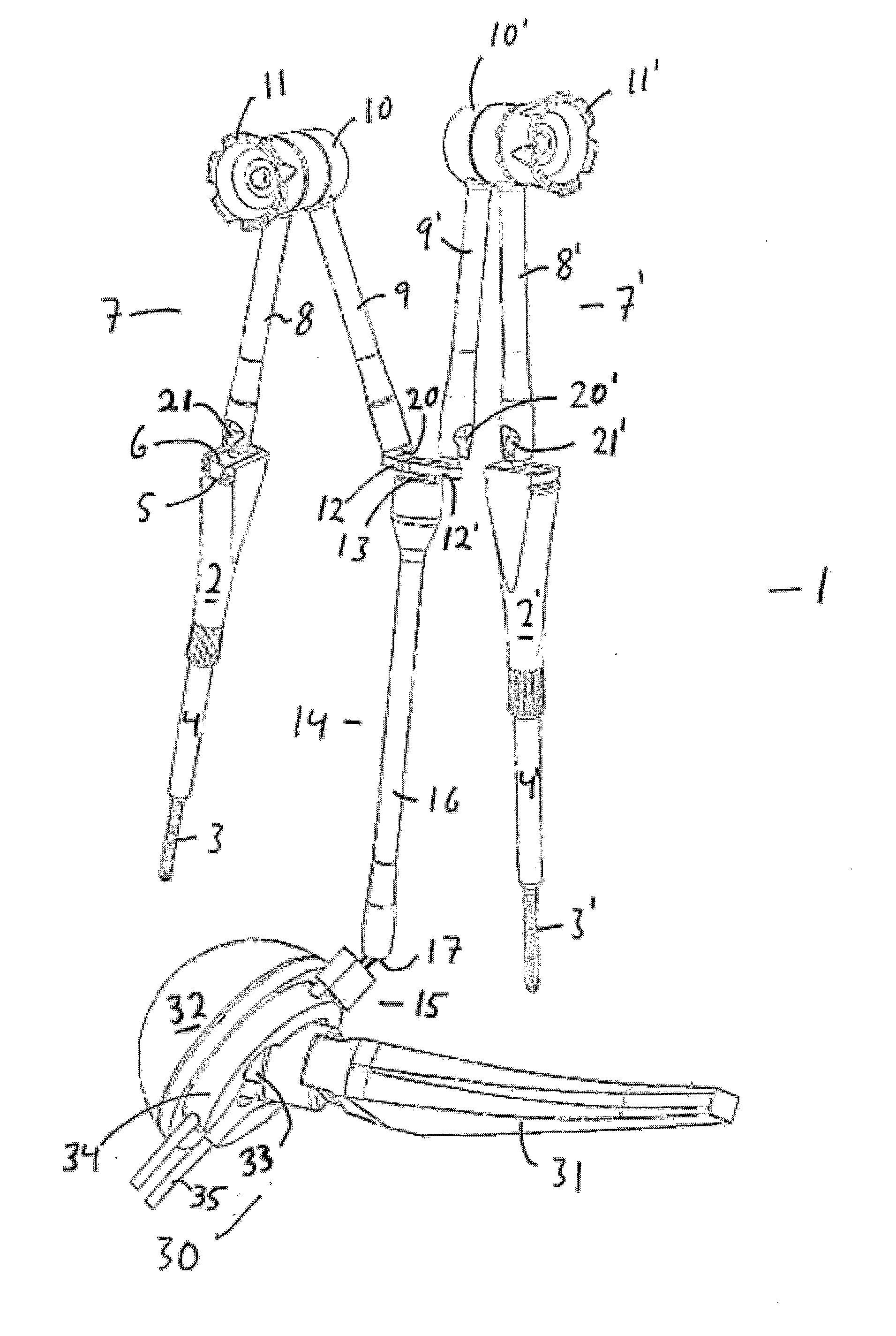System, method and tool for ensuring correct insertion of an artificial hip joint
a hip joint and hip joint technology, applied in the field of orthopaedic surgery, can solve the problems of increasing the risk of dislocation, difficult practice practice accurate alignment of the prosthesis stem in the femoral canal, and the head of the prosthesis to the lever, so as to achieve reliable compensation, improve the effect of flexibility and good alignment of the parts involved
- Summary
- Abstract
- Description
- Claims
- Application Information
AI Technical Summary
Benefits of technology
Problems solved by technology
Method used
Image
Examples
Embodiment Construction
[0088]Proper control over leg length and offset during total hip replacement can only obtained through comparison of a series of repeated measurements.
[0089]1) The first measurement is performed as a combination of measurements on preoperative x-rays and clinical measurements on the patient performed in the outpatient clinic when the surgery is planned.
[0090]2) The next measurement is performed between a pelvic and a femoral landmarks performed in the early stage of the surgery, before the femoral neck is divided. For full control of the procedure, two more measurements should be carried out,
[0091]3) One measurement should be carried out during a trial reduction of the joint with temporary prosthesis components and
[0092]4) One when the actual components have been inserted still though, with a choice between different neck lengths.
[0093]A series of measurements as described above enables the surgeon to choose prosthesis components (stage 3 to 4) to achieve the measurements that were ...
PUM
 Login to View More
Login to View More Abstract
Description
Claims
Application Information
 Login to View More
Login to View More - R&D
- Intellectual Property
- Life Sciences
- Materials
- Tech Scout
- Unparalleled Data Quality
- Higher Quality Content
- 60% Fewer Hallucinations
Browse by: Latest US Patents, China's latest patents, Technical Efficacy Thesaurus, Application Domain, Technology Topic, Popular Technical Reports.
© 2025 PatSnap. All rights reserved.Legal|Privacy policy|Modern Slavery Act Transparency Statement|Sitemap|About US| Contact US: help@patsnap.com



